GAT 039 Brett Littman
Isamu Noguchi:The In-Between: Part 1
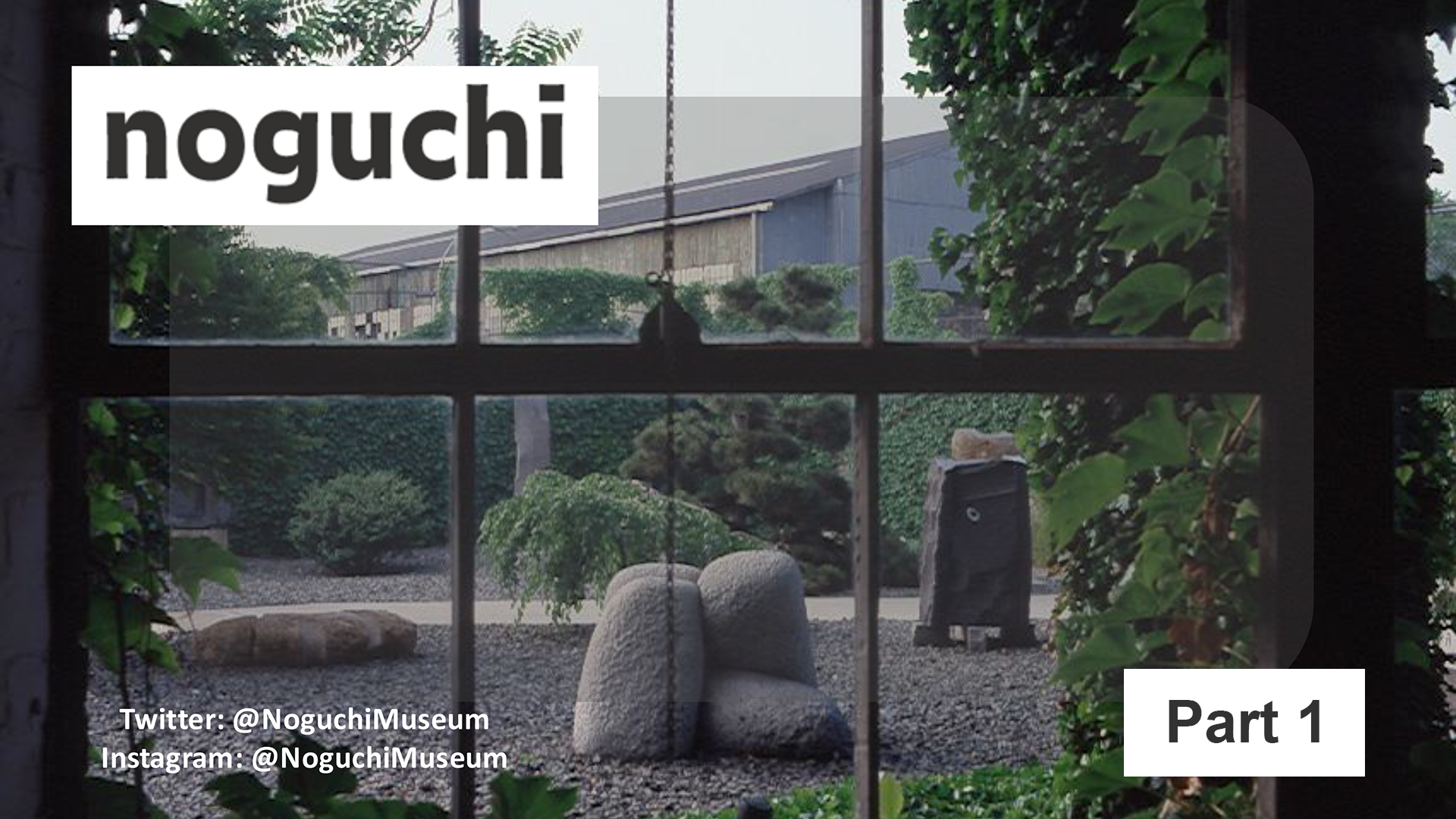
Isamu Noguchi (1904–1988) is regarded as one of the most important sculptors of the 20th century. Brett Littman, who served as Director of The Isamu Noguchi Foundation and Garden Museum from 2018 to 2023, offers an interpretive framework that reads Noguchi’s practice through the concept of “The In-Between.” The following is an excerpt from a talk held on April 18, 2023.
Edited by Ishii Jun’ichiro (ICA Kyoto)
Part 1: The Isamu Noguchi Museum
The title of my talk tonight is “Isamu Noguchi: The In-Between.” The more that I study Isamu Noguchi’s work and life, the more that I begin to realize that the only way to truly understand him is to think about the spaces between things. So the space between the United States and Japan, the space between mediums, the space between the sculpture and another sculpture, the space between the sculpture and a building, the space between the sculpture, the building and the landscape and a mountain. These are the places where we might find Isamu Noguchi and really begin to understand him more deeply.
Noguchi was born in Pasadena, Los Angeles in 1904, moved to Japan with his mother, Leonie Gilmore in 1907, and stayed in Japan for about a decade. Noguchi experienced a lot of racism in Japan as a kind of half-American, half-Japanese child. For his father, Yone Noguchi, the well-known poet, it was not necessarily beneficial to him to have a half-American, half-Japanese son, so that added additional complications.
In 1917, Noguchi’s mother put him on a boat from Japan to Indiana because she had seen that there was a school (Interlochen) that she read about in “Scientific American” that maybe would be a good school for him to go to.
She knew nothing about it. Noguchi knew nothing about Indiana. There he was, going back to the United States by himself. The school is basically a vocational school, and of course, as Noguchi arrived there, the U.S. war effort was beginning, and the school was actually closed down and turned into an army base. So now Noguchi didn’t even have a school to go to, and he’s alone in Indiana.
Noguchi ends up back in New York in about 1921, enrolled at Columbia University in medical school. His mother tells him (and she’s probably the only mother in the history of mothers to tell this to a child) he should drop out of medical school and be an artist. Noguchi begins to sculpt and decides to change his name from Isamu Gilmore to Isamu Noguchi (1923).
In 1926, Noguchi applies for Guggenheim Foundation, ostensibly to travel to China, but in typical Noguchi fashion, he ends up in Paris, where he manages to intern himself to Constantin Brâncuși, probably the most reclusive and hermetic of all the artists of the 20th century. And so begins decades of travel from New York that would take him to Mexico, Egypt, Indonesia, India, and Japan.
In the mid 50s, Noguchi is back in New York. He has a studio at MacDougal Alley in the middle of Greenwich Village. He is in the absolute center of the kind of artistic scene in Greenwich Village, which is a lot of drinking in bars and hanging out, maybe to the distraction of his work, but he is absolutely in the center of the New York art scene.
In about 1960, he begins to look for another studio somewhere outside of the middle of the kind of insanity of Central New York, which finally brings us to this slide of Noguchi walking outside of the space that became a studio in Astoria, New York in 1961.
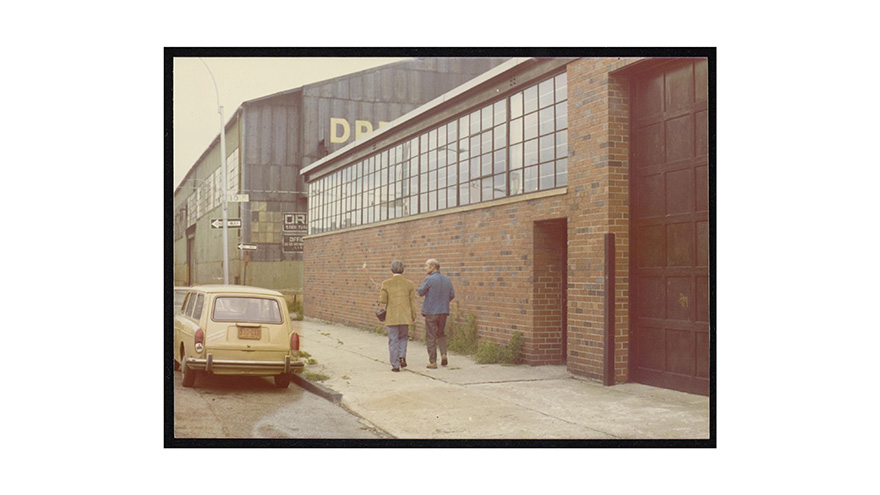
Photo courtesy of The Isamu Noguchi Foundation and Garden Museum
This building was just a prefab building. There’s a lot of light industrial buildings in the neighborhood, and it was a neighborhood that Noguchi was familiar with because he was going there to buy slate and marble and also have things fabricated.
Moving to Astoria, Queens in 1961 would have been the equivalent of going to Alaska. It was basically like a place that no one was going to. It was totally empty. It was really just fabricators and material sellers like marble and slate, and it provided Noguchi with a quiet place to go and to really focus on his work.
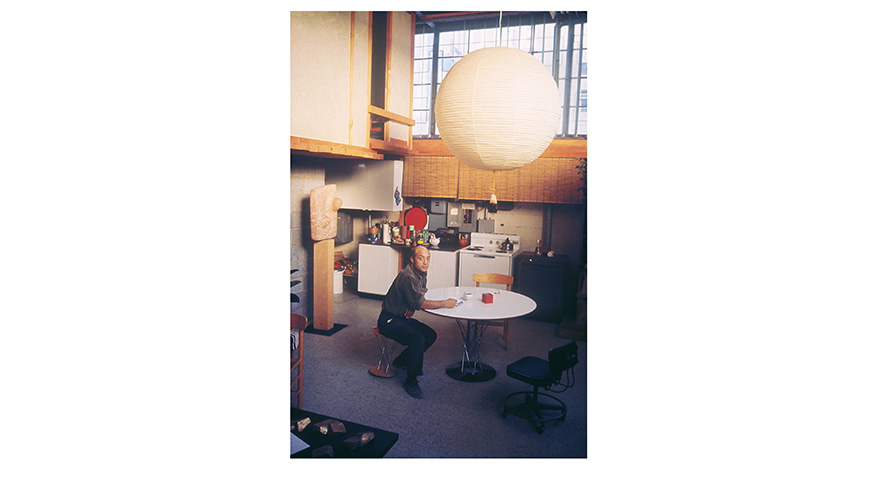
Photo courtesy of The Isamu Noguchi Foundation and Garden Museum
With the help of two Japanese carpenters that he met who lived in Queens, Noguchi built himself an apartment that he called the pied-à-terre in the factory. He used a lot of reclaimed wood that he was picking up in Japan and shipped back. He was able to create a space, probably the first modernist Japanese apartment in New York City with shoji screens, which was photographed many times and really became in a way a kind of stage set for Noguchi.
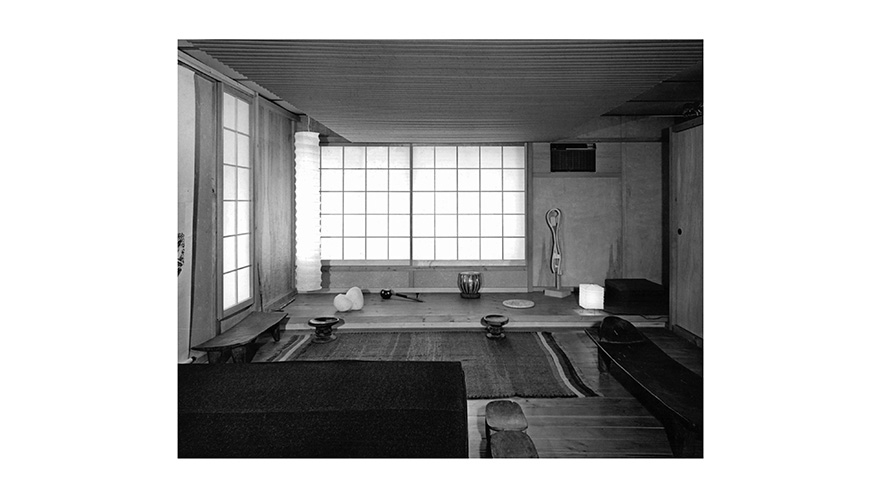
Photo courtesy of The Isamu Noguchi Foundation and Garden Museum
Many parties were held here. He did live and work in the studio, but the studio was incredibly cold in the winter and very hot in the summer. So it was difficult for him to live there all the time. But this studio space became quite famous, and as I said, well photographed.
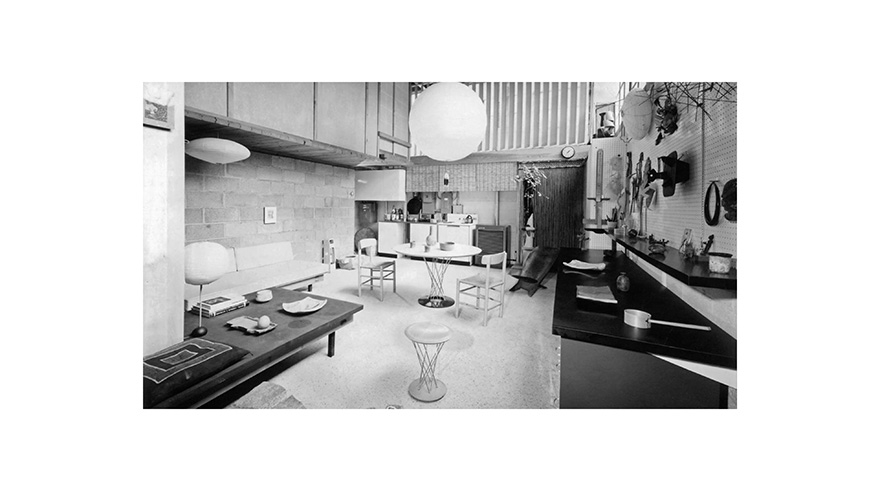
Photo courtesy of The Isamu Noguchi Foundation and Garden Museum
The studio was an active space though for making. He had pneumatic drills, the ability to hoist things, and he could work in very large stone. He could also set up models. He could have essentially the next batch of works that he was working on for shows or museum shows there. Many people came to visit the studio – curators, architects, and it was a really a central point for his thinking and for his work for many years.
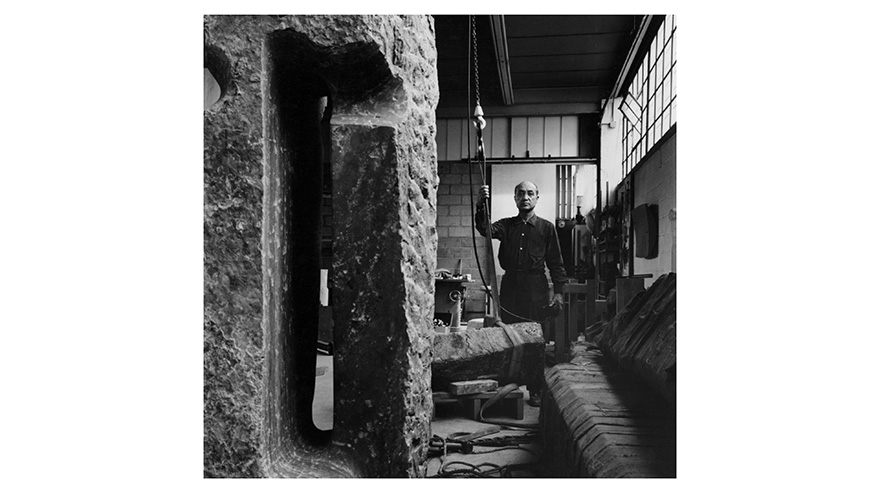
Photo courtesy of The Isamu Noguchi Foundation and Garden Museum
One of the problems is if you’re a sculptor working with 4-ton stone sculpture, you’re going to run out of space pretty quickly. The studio building was only about 2,000 square feet of usable space minus the apartment.
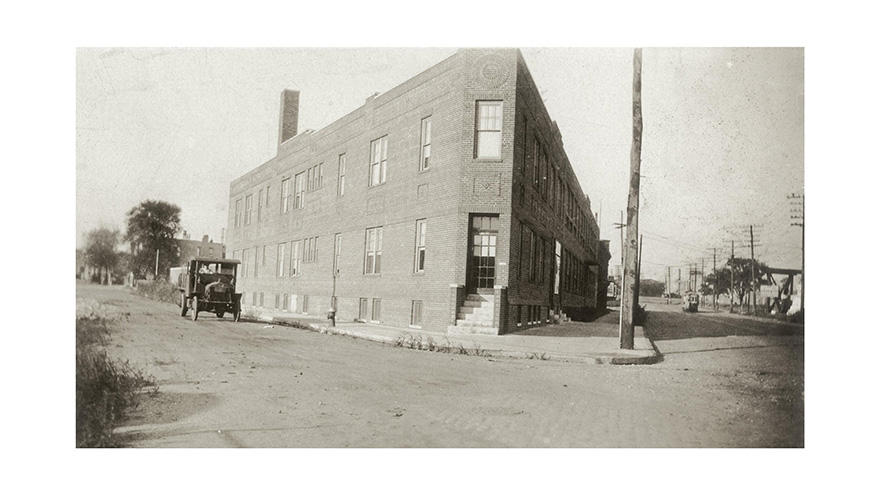
Photo courtesy of The Isamu Noguchi Foundation and Garden Museum
Noguchi looking out of the window of his studio, looked at this building, which was the old Demgen and Balletto Photo Engravers building. He started to dream about buying this building and having a much larger space to display his own work.
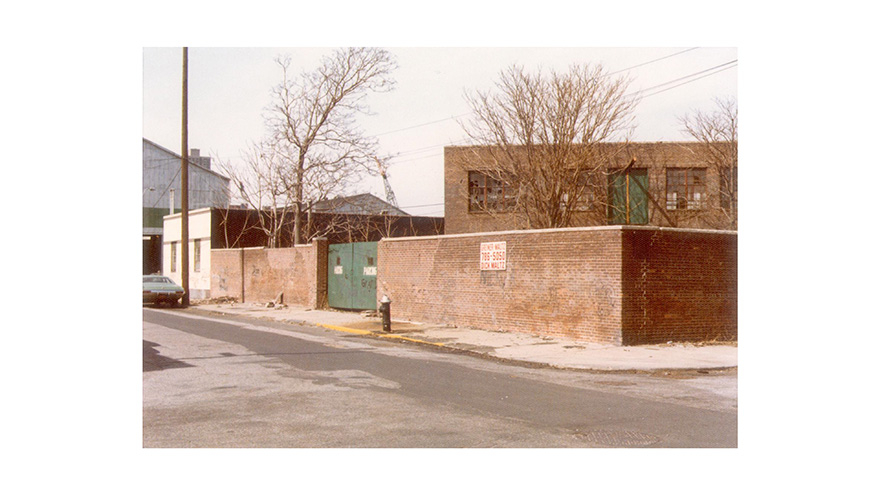
Photo courtesy of The Isamu Noguchi Foundation and Garden Museum
Noguchi was probably a difficult client and also a difficult artist for galleries to work with. We own 3,000 of the 5,000 works that he made, so just think about that. I mean, 3/5ths of his output. What that probably meant was that Noguchi when he had shows, he might send 10 works to a gallery, 7 were not for sale and the 3 that were for sale were probably not the best works.
Noguchi already in the 50s and 60s was beginning to self-archive and also thinking a lot about creating his own space and his own museum.
By 1974, Noguchi had amassed enough money to buy the photo engraving building. Then, by 1981, he was able to buy the other building, which was a garage, which you can see kind of in the corner of this photo.
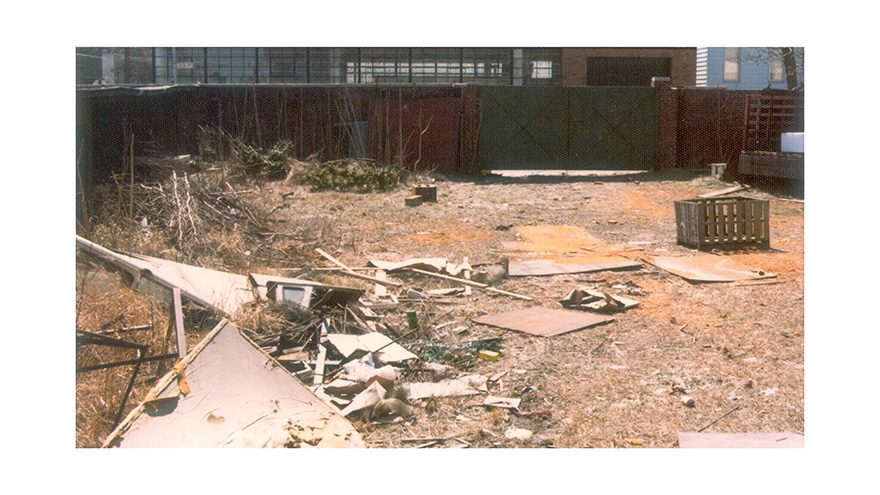
Photo courtesy of The Isamu Noguchi Foundation and Garden Museum
Basically, by about 1982, Noguchi was planning his own museum. The germ of this idea had already been placed in his head probably about a decade earlier. By the time he bought the first building in 1974 and laid out the installation in that building, I think he was already thinking about starting his own foundation and museum at that time.
Noguchi was happy to sell work to other museums around the world and in the United States, but I think he was always disappointed when a work went into a collection. It usually went into the basement after it was on display.
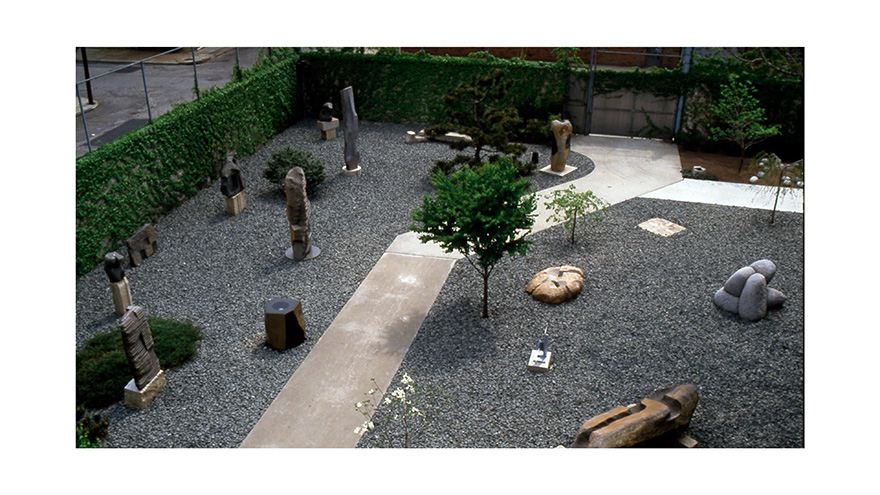
Photo courtesy of The Isamu Noguchi Foundation and Garden Museum
I think for Noguchi it was important for him to choose the works, have them permanently installed, design the garden and the whole experience of the indoor and outdoor space – a kind of total artwork that he could make with singular works in a museum.
In some ways, the museum that I run is an interesting museum because not only is it a museum of one artist, it is also an artwork in and the siting of the work is Noguchi’s placement.
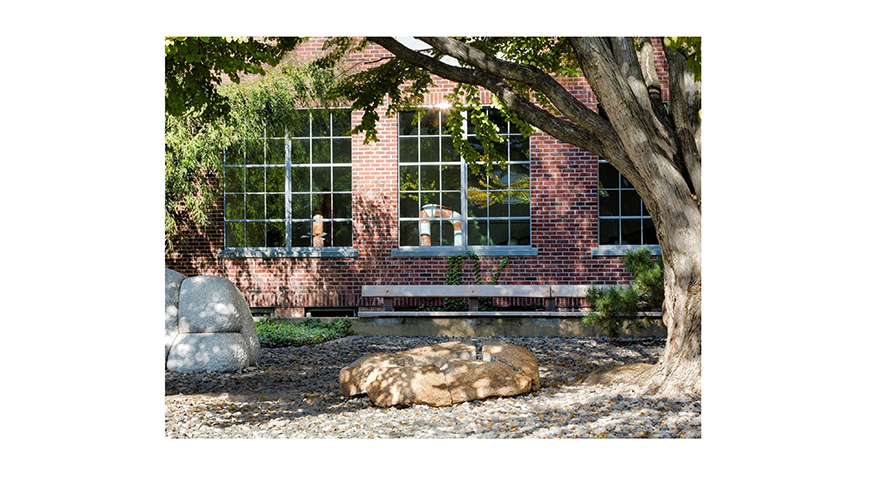
Photo courtesy of The Isamu Noguchi Foundation and Garden Museum
to the “Isamu Noguchi:The In-Between: Part 2“
Brett Littman
Brett Littman held the position of Director at the Isamu Noguchi Foundation and Garden Museum in Long Island City, New York from May 2018 until June 2023. He was Executive Director of The Drawing Center from 2007–2018; Deputy Director of MoMA PS1 from 2003–2007; Co-Director of Dieu Donné Papermill from 2001–2003 and Associate Director of Urban Glass from 1996–2001.
Littman’s interests are multi-disciplinary: he has overseen more than 150 exhibitions and personally curated more than thirty exhibitions over the last 16 years, dealing with visual art, outsider art, craft, design, architecture, poetry, music, science, and literature. He was named the curator of Frieze Sculpture at Rockefeller Center for 2019 and 2020, is an art critic and lecturer and an active essayist for museum and gallery catalogues, in addition to writing articles for a wide range of U.S. and international art, fashion, and design magazines.
A native New Yorker, Brett Littman received a Chevalier of the Order of Arts and Letters from France in 2017 and his B.A. in Philosophy from the University of California, San Diego.
* This talk was held at the Kyoto University of Arts on April 18, 2023.